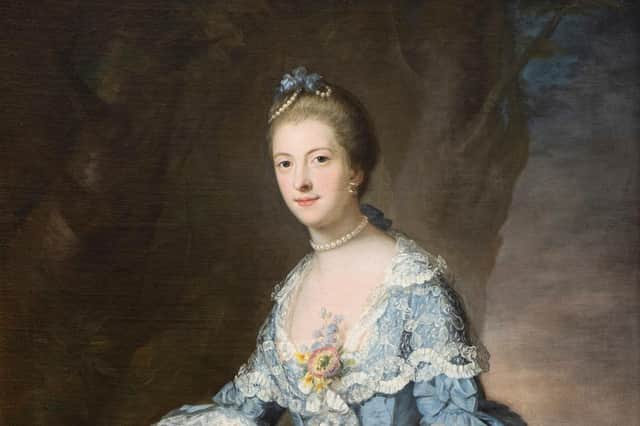Forgotten world of pioneering female artist unlocked by portrait


Katherine Read, from Logie, near Dundee, was super talented, fashionable and sought after with her best work compared that of her contemporary Thomas Gainsbourgh, England’s favourite portrait painter.
But Read’s legacy failed to endure with her achievements broadly obscured by the male-dominated art world of the 18th Century.
Advertisement
Hide AdAdvertisement
Hide AdNow, the purchase of one of her portraits by the McManus Art Gallery and Museum in Dundee, as well as work by the Dundee Women’s Trail, has brought to the fore the colourful and accomplished life of the aristocrat’s daughter from Angus.
The portrait of Lady Glenorchy, painted by Read in 1762, is one of around 300 completed by the artist but the works, mostly of women and children, rarely leave the families they were painted for and seldom come up for auction.
Anna Robertson, Fine and Applied Art Manager at The McManus, said: “Professional women artists of this period are rare, the connection to Scotland rarer and for The McManus, Katherine Read’s connection with Dundee makes her unique.
"We are proud to add such a significant work to our permanent art collection – further strengthening a collection that is recognised as being of national importance.”
As a woman, Read could not undertake the same professional training as a male artist and was never able to study life drawing. Her work may further have been marginalised by her use of pastels, broadly seen as a woman’s material.
The artist was one of 13 children and her parents, Alexander Read and Elizabeth Wedderburn, were both from prominent Jacobite supporting families with her uncle Sir John Wedderburn, 5th Baronet of Blackness, captured after Culloden and executed in 1746.
As the rising began, Katharine went to Italy in 1745 to train in pastels under Maurice-Quentin de La Tour. She moved to Rome in 1751, where she established a portraiture clientele from the Italian aristocracy and Brits on the Grand Tour.
Read was confident of her talents, writing to her brother “You’ll see I’ll top it with the best of them”.
Advertisement
Hide AdAdvertisement
Hide AdShe established her studio in London in the mid 1750s and her career took off in 1761 when she was commissioned to paint Queen Charlotte and her children.
One commentator noted around this time: “She’ll equal at least if not excel the most celebrated of her profession in Great Britain”.
It was in London she met diarist Fanny Burney, who made a series of rather unflattering observations about the artist which were later re-assessed by feminist Germaine Greer.
Burney wrote: “Miss Read is shrewd and clever … but she is so very deaf that it is a fatigue to enter conversation with her. She is most exceedingly ugly, and of a very melancholic or rather discontented humour… added to which she dresses in a style the most strange and queer that can be conceived & which is worst of all, is always very dirty.”
In 1777, Read, travelled to India in the hope of establishing a practice for in Madras. The following year she set sail for home but she didn’t survive the journey and was buried at sea, aged 55.